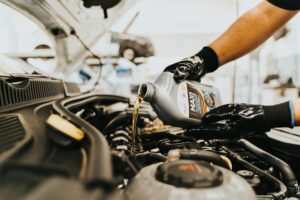Owning a car is convenient, but it also comes with its share of maintenance and occasional headaches. While some issues are just minor annoyances, others can grow into costly repairs if ignored.
Knowing the most common car problems can help you catch trouble early, keep your vehicle running smoothly, and avoid surprises on the road.
Warning Lights on the Dashboard
Modern cars rely on sensors to track performance. When something is off, you might see a warning light. Some lights signal immediate attention, like the oil pressure or engine temperature warning. Others, like the check engine light, may require diagnosis but are not always urgent.
Never ignore a warning light for too long. A simple sensor fault might mask a deeper issue. Use a code reader or visit a mechanic to get a proper diagnosis.
Dead or Weak Battery
Car batteries last around three to five years. If yours is older or you notice slow starts, dim headlights, or dashboard flickering, the battery could be failing.
Extreme temperatures, short trips, and leaving interior lights on can all drain battery life. If your car will not start and makes only a clicking sound, a dead battery is a likely culprit.
Keep jumper cables or a portable jump starter on hand. If problems keep coming back, it may be time for a battery replacement or a check of your vehicle’s charging system.
Brake Noises or Poor Stopping Power
Your brakes are one of the most important safety features on your car. If you hear squealing, grinding, or feel pulsing in the brake pedal, get them checked as soon as possible.
These symptoms can indicate worn brake pads, warped rotors, or low brake fluid. Delaying repairs not only affects safety but often leads to more expensive fixes.
Schedule regular inspections to stay ahead of wear, especially if you do a lot of stop-and-go driving or carry heavy loads.
Engine Overheating
An overheating engine can leave you stranded and cause serious damage if not addressed quickly. Common causes include low coolant, a faulty thermostat, a broken water pump, or a clogged radiator.
If the temperature gauge climbs or you see steam coming from under the hood, pull over safely and turn the engine off. Never remove the radiator cap while the engine is hot.
Check coolant levels when the engine has cooled. If it is low, top it off and have the cooling system inspected. Repeated overheating should never be ignored.
Transmission Issues
Transmission trouble often starts small. You may notice delayed shifting, slipping gears, or strange noises when accelerating. If your vehicle hesitates or jolts during gear changes, have it looked at right away.
Automatic and manual transmissions rely on fluid to operate smoothly. Low or dirty transmission fluid can trigger problems. A basic fluid service might fix the issue if caught early.
Left alone, transmission damage can cost thousands to repair. Catching symptoms early can prevent major bills.
Uneven Tire Wear or Vibration
Tires wear over time, but if you notice one side wearing faster than the other, or feel vibrations while driving, it could be a sign of misalignment, suspension problems, or an issue with tire balance.
Regular tire rotation, proper inflation, and alignment checks help extend tire life and improve ride quality. Ignoring tire problems affects fuel economy and driving safety.
Also check for bulges, cracking, or low tread depth that might lead to a blowout.
Engine Misfires or Rough Idling
If your engine hesitates, shakes at idle, or lacks power, you could be dealing with a misfire. This might stem from worn spark plugs, coil problems, dirty fuel injectors, or a failing sensor.
In some cases, you might hear a knocking noise or smell unburned fuel. While it might still be drivable, misfires reduce performance and fuel efficiency—and can damage your catalytic converter over time.
A scan of the onboard computer usually points to the cause. Replacing spark plugs or doing a tune-up often solves the problem.
Fluid Leaks
Any puddle or stain under your car deserves attention. Common leaks include:
- Oil, usually brown or black
- Coolant, often bright green, orange, or pink
- Transmission fluid, typically red
- Brake fluid, clear to yellow and slippery
- Power steering fluid, which may be reddish or amber
Even small leaks can grow quickly. Address them early to avoid bigger issues like engine damage or system failure.
No car stays perfect forever. But understanding the most common car problems can help you stay ahead of repairs, stretch your maintenance budget, and keep your ride safe.
Pay attention to early warning signs. Listen for unfamiliar sounds, watch for changes in handling, and never ignore dashboard lights. A few smart checks along the way go a long way toward keeping your vehicle dependable and road-ready.



